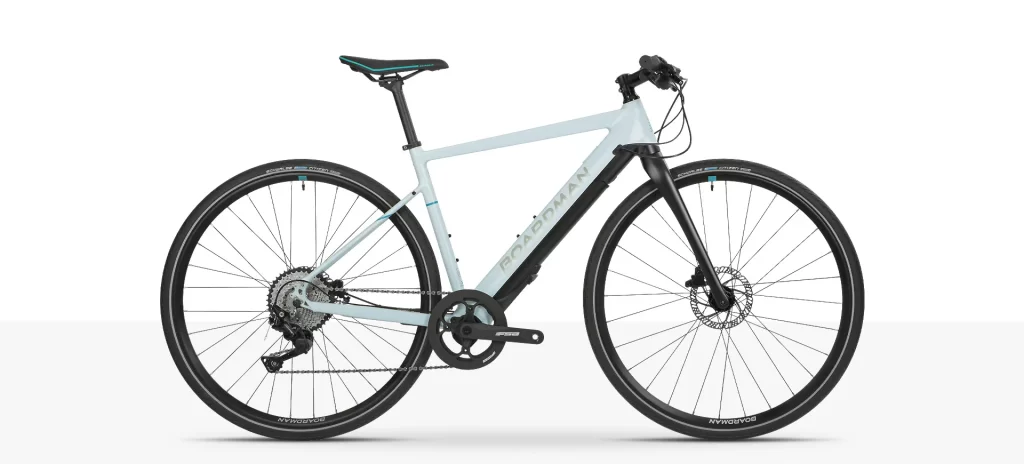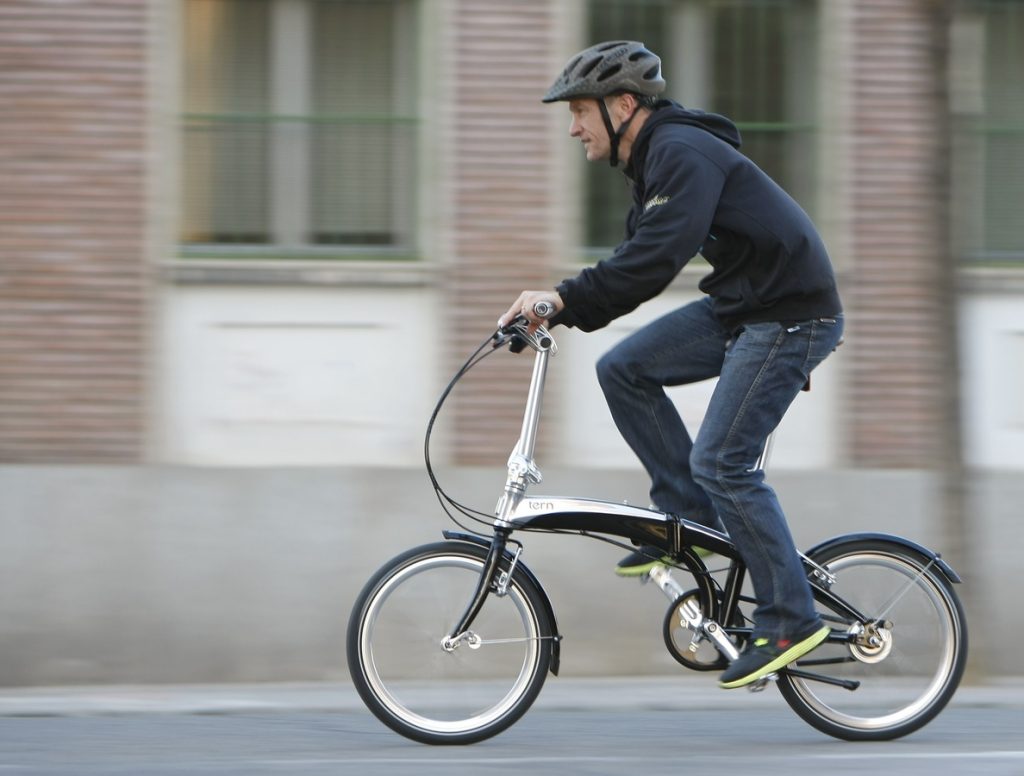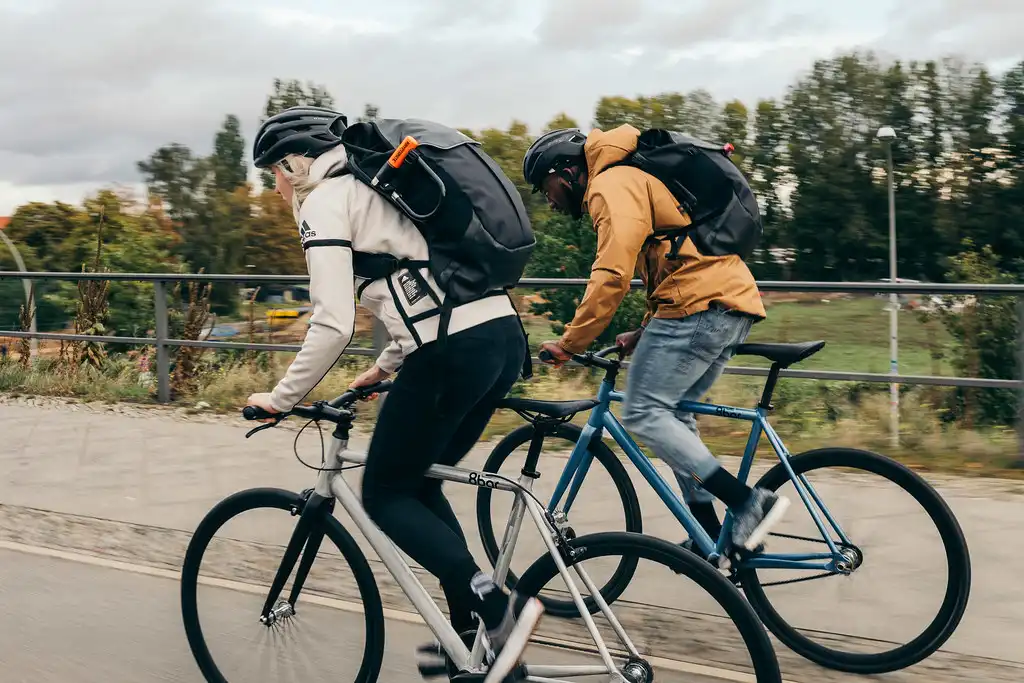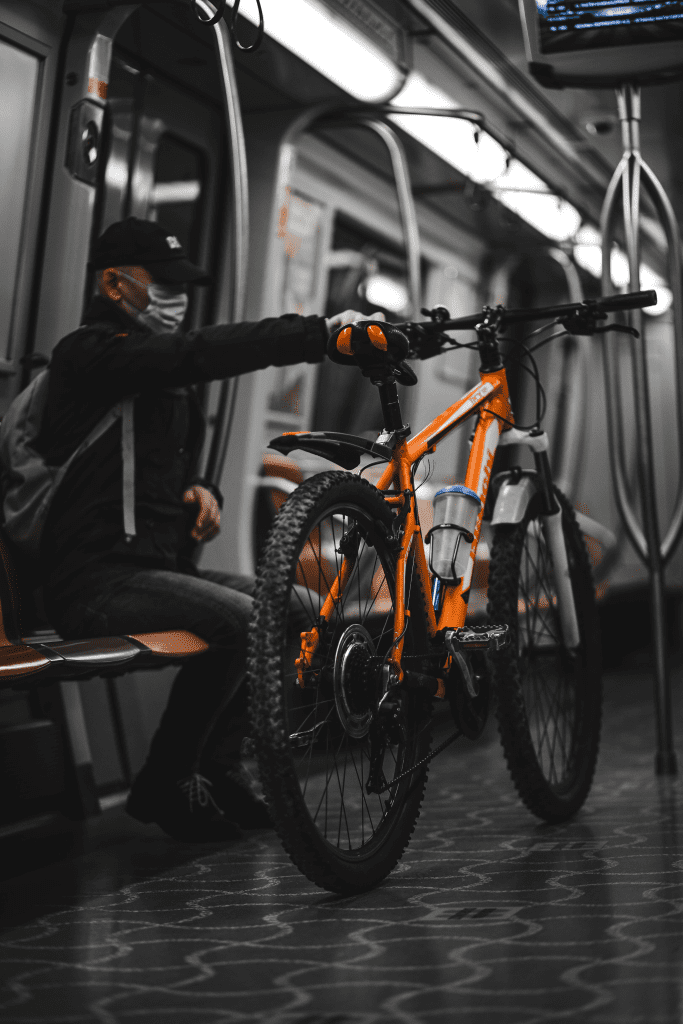Commuter bikes are specially designed for regular short-distance rides, like travelling to work or running errands around town. With the right commuter bike, your daily commute can be faster, more convenient and environmentally friendly.
However, with so many models and options to choose from, it can get overwhelming for first-time buyers. This article will guide you through the 7 most important factors to consider when picking out the best commuter bike for your needs.
1. Type – Identify the Right Bike Type for You
The first decision to make is choosing the overall bike style and geometry suited for your commuting route and riding preferences. Do you need a hybrid or a gravel bike? folding or road?
Key categories include:
Hybrid Bikes


Hybrid bikes expertly combine design elements from road bikes and mountain bikes to create extremely versatile and comfortable commuting bikes. They have:
- Upright riding posture for visibility in traffic
- Medium width tyres with light tread for efficient rolling on pavement
- Flat or straight handlebars for casual control
With quick handling and reliable components, hybrid bikes work excellently for city commutes of up to 15 miles.
Road Bikes


Pure road bikes feature curved drop down handlebars and skinny tyres optimised for speed. While lightweight and nimble, the aggressive aerodynamic geometry leans the rider forward placing more weight on the hands.
Best for pavement-only medium distance commutes between 5-15 miles for riders wanting maximum efficiency.
Gravel Bikes


Closely related to road bikes, gravel bikes have a drop-bar design but with greater frame and tyre clearance to accommodate wider 32-35mm tyres.
The slightly upright geometry and increased stability from the tyres makes them ideal for commutes involving gravel paths or light trails beyond just tarmac roads.
Electric Bikes


Electric commuter bikes have integrated motors and battery packs to give you pedal assistance. This makes longer distances much more practical by reducing effort up to 20mph.
E-bikes enable commutes over 15 miles or very hilly routes to not require showering after riding. Highly versatile with certain hybrid and gravel styles.
Folding Bikes


Foldable commuter bikes use custom hinges in their frame and components allowing them to collapse into a compact size for storage and transport.
Ideal for multimodal commuters coupling cycling with public transport. Easy to bring along while folded up on trains and buses.
Based on your commuting distance, terrain, storage access and physical capability – one bike style likely fits best. Prioritise function over just what looks trendiest.
Key Takeaways: Commuter Bike Types
- Hybrids: Extremely versatile bikes for city use under 15 miles
- Road: Pure speed specialised for 5-15 mile pavement tarmac routes
- Gravel: Built to handle light off-road terrain beyond roads
- E-Bikes: Electric assist motors make longer distances practical
- Folding: Compact folding for multimodal public transport coupling
2. Frame – Select the Optimal Material


The bike frame serves as the core foundation determining durability, vibration dampening, weight and price. Common frame materials include:
Aluminium Alloy
Most affordable yet very reliable option. Aluminium provides an excellent strength-to-weight ratio combined with natural vibration dampening. Modern techniques like hydroforming enhance comfort.
budget-friendly prices coupled with low maintenance requirements makes aluminium the choice for entry-level yet dependable commuter bikes.
Can start as low as £200-£400 for single-speed simpler fixed gear options from brands like Carrera or Raleigh. Geared road and hybrid comfort aluminium bikes usually cost between £400-800.
Steel
High tensile and chromoly steel were once the standard for bike building. While largely replaced by aluminium and composites for performance bikes, steel maintains devotees enjoying its long lasting durability, supple ride quality and easy repair-ability.
The material dampens shock extremely well for a smooth comfortable ride feel beyond aluminium rigidity. However, weight remains higher than modern alternatives.
Entry-level steel hybrid city bikes cost approximately £500-750. Bixie being a reputable London based steel frame specialist.
Carbon Fibre
Carbon fibre frames utilise woven composite materials making them exceptionally lightweight yet stiff for instant acceleration. Significant vibration harshness is the tradeoff for efficiency gains.
As the priciest option, carbon requires greater care protecting against chips and fractures. Component integration makes field repairs challenging as well.
Performance carbon bikes from brands like Giant and Boardman start around £1,000+ mark and go up and up from there. Lower priced Chinese open mould composites frames start under £500.
Key Takeaways: Frame Materials
- Aluminium: Most affordable while still smooth riding and durable
- Steel: Heavier but comfortable shock absorption and longevity
- Carbon Fibre: Premium price for ultra lightweight and stiffness
Select frame material based both on budget and preference between efficiency, comfort and longevity.
3. Components – Stock or Upgrade?


Bike components massively influence the riding experience and price point:
Groupsets
Groupsets include collections of shifting gears, pedals, cranks, chains and brakes bundled for efficient integration.
High-end groupsets enhance precision and reliability but costlier groupset components offer diminishing meaningful benefits beyond mid-tier for most commuting needs.
Entry-level 8-10 speed combinations from reputable brands like Shimano, Sensah and Microshift already deliver excellent quality shifting for casual commuters starting around £250.
Mid-range options like Shimano Tiagra, 105 or SRAM Apex add marginally smoother shifts along with reduced weight. Benefits casual riders may barely leverage to justify doubling of expenditure over entry-kits. £500+
Wheels & Tyres
Wheels absorb impacts and offer vital grip when rolling over urban obstacles. Wider road tyres exhibit greater shock dampening for a more comfortable, stable ride.
Look for at least 28-32mm width tyres to smoothly handle hazards like potholes, storm drains and loose gravel protecting rims from damage while enabling lower pressure for cushioning.
Quality puncture protection belts like those from Schwalbe also prevent flats. Expect to spend around £30-60 per tyre for proven urban resilience from Conti, Schwalbe, Kenda etc. Our guide on the top commuter tyres is a great place to find your perfect rubber!
For wheels, durable double walled rims provide reinforced side impact handling without dramatic added weight. Ryde, DT Swiss offer affordable options from around £70. Custom hand-built wheels available upwards of £150 or more.
Key Takeaways: Components
- Quality shifting with 8/9/10 speed kits from Microshift, Sensah
- Durable 28-32 mm+ urban tyres with puncture protection
- Double walled wheels handle side impacts under £100
Well chosen mid-tier components enhance reliability without breaking bank
4. Carefully Consider Integration vs. Customisation


Modern commuter bikes feature excellent proprietary component integration right out the box for simplified maintenance. However, customisation does allow closer tailoring for specialised preferences:
Stock Integrated Builds
Reputable brands expertly configure matched groupsets, wheels, tyres and finishing kit tailored for discipline use cases.
For example, Genesis integrates mudguard/rack mounts and dynamo lighting on their Croix de Fer model oriented specifically for reliable daily commuting utility.
While upgrades are limited, overall performance, serviceability and value remains excellent given economies of scale. Reduced temptation to tinker preserves wallet as well!
Custom Built Bikes
Custom builder frameworks enable selecting individual parts across different component brands to perfectly match intended purposes.
Want to match lightweight Hunt wheels to reliable Shimano Tiagra shifting? Custom builders empower tailoring. Just prepare for potentially longer lead times and higher costs from bespoke assembly.
Ultimately either option can produce super commuter bikes. Just ensure calibrated parts suit intended use rather than mismatching components purely on perceived prestige alone.
Key Takeaways: Build Approaches
- Integrated: Streamlined performance matching with easier maintenance
- Custom: Bespokely tailor components to specialised preferences
Consider balance between tailored optimization vs consolidated reliability/value
5. Size – This Matters Above All Else


Even the finest commuter bike proves worthless if improperly sized leading to discomfort, injury or awkward handling.
Road bikes size frames according to centre to top tube length dimensions like 51cm, 54cm etc. Hybrids and other city bike types often use descriptors like small, medium and large.
Always thoroughly validate intended bike size fits your proportions before purchasing:
- Standover Height: Flat footed, ensure 1-3 inches clearance between top tube and groin to dismount safely without lower body contortion.
- Reach: With hands on handlebars, adjust saddle height so arms extend comfortably without overstretching.
- Hand Positioning: No weight or pressure on hands, wrists or shoulders when gripping bars.
- Leg Extension: Knees slightly bent when pedals are at 6 and 12 o’clock positions.
Ideally size your next bike through professional bike fits accounting for cycling flexibility. Or carefully replicate
Or carefully replicate position measurements from any bikes you already ride comfortably.
Online sizing calculators only serve as starting points. Test ride the actual bike first whenever possible or ensure generous return policies to swap sizes after carefully noting fit.
Finding accurate frame dimensions provides the fundamental foundation for enjoyable cycling and efficient power transfer. An incorrectly sized bike will always feel awkward compromising control.
Key Takeaways: Size
- Confirm specific frame dimensions match your proportions
- Validate standover height, reach, hand and leg positioning
- Test ride when possible, use generous return policies if not
Do not compromise fit. All other fancy features prove meaningless unless sized comfortably.
6. Extras – Prioritise Practical Accessories


While flashy upgrades seem enticing, practical accessories often prove more worthwhile:
Lights: Ensure front and back illumination when riding in low light. Rechargeable USB lights reduce disposable waste.
Fenders: Full mudguards protect clothes from road spray in the rain while preventing water flicking into moving parts. Don’t like fenders? Some good quality waterproof trousers will serve you well, trust us!
Racks: Luggage carriers like top tubes and rear racks enable conveniently securing bags and panniers off shoulders.
Mirrors: Helmet or handlebar mirrors improve visibility monitoring traffic racing up from behind.
Baskets: Front basket racks add handy storage space for picking up groceries and takeout enroute.
Phone Mounts: Stem or bar phone holders enable easily glancing at directions and notifications.
Kickstands: Sturdy kickstands keep bikes securely upright when parked outside shops.
Bottle Cages: Mounts provide easy access to water bottles helping stay hydrated.
Pumps: Mini frame pumps or CO2 canisters enable self recovery from unfortunate flats.
Locks: A high quality lock is one of the most important things you can spend your money on
Upgrades: More capable hydraulic disc brakes over cheaper cable varieties greatly enhance wet conditions stopping power.
Key Takeaways: Accessories
- Prioritise lights, fenders, racks/baskets storage solutions
- Phone mounts, mirrors and kickstands further improve convenience
- Pumps empower self rescue from flats
- Upgraded hydraulic disc brakes add safety margin
Practical accessories often add more real world value over expensive upgrades with limited functional improvement for commuting needs.
7. Price – Seek Out Special Discounts


Even when equipping new commuter bikes with necessary accessories, costs still quickly tally up. To ease expenditures, leverage any special savings opportunities through:
Bike to Work Schemes: Up to 40% discounted commuter bike purchases repaid from pre-tax salary sacrifices. Over 750 UK employers participate with applications coordinated through Green Commute Initiative, CycleScheme and others. Most hybrid and road bike styles qualify.
Student Discounts: Numerous bike brands offer student pricing for enrolled university attendees. Typical 10% off for showing valid student IDs. Worth querying before purchasing.
Tax Return Deductions: Self-employed individuals can claim tax relief as bicycles represent legitimate business transport expenses. Depreciation rules allow reclaiming a proportion of total bike and safety equipment costs.
Second Hand Marketplaces: Scouring classifieds and online marketplaces may produce major deals on prior year models from sellers upgrading their own commuter bikes. Just thoroughly inspect components before purchasing any used bikes.
Off-Season Sales: Retail bike shops deeply discount prior model years in winter months ahead of next season shipments arriving so plan opportunistic purchases accordingly.
Key Takeaways: Discounts
- Bike to Work schemes deliver up to 40% off
- Students save 10% with academic IDs
- Self-employed tax relief options
- Second hand buys produce savings
- Shop off-season sales in winter
Savvy shopping produces hundreds in extra savings off quality commuter bike setups.
So there you have it – the top 7 key considerations including reviewing commuter bike styles, sizing accurately, setting realistic component budgets, weighing customization against integrated builds, properly accessorising for intended utility and leveraging any attractive discounts or incentives. Follow this checklist for picking out your perfect commuter!

